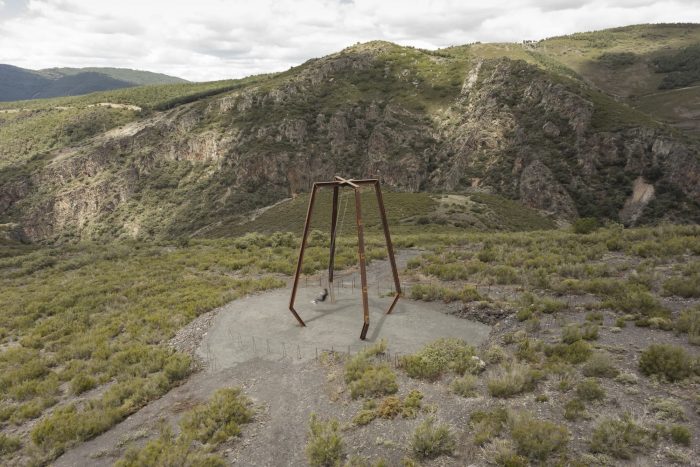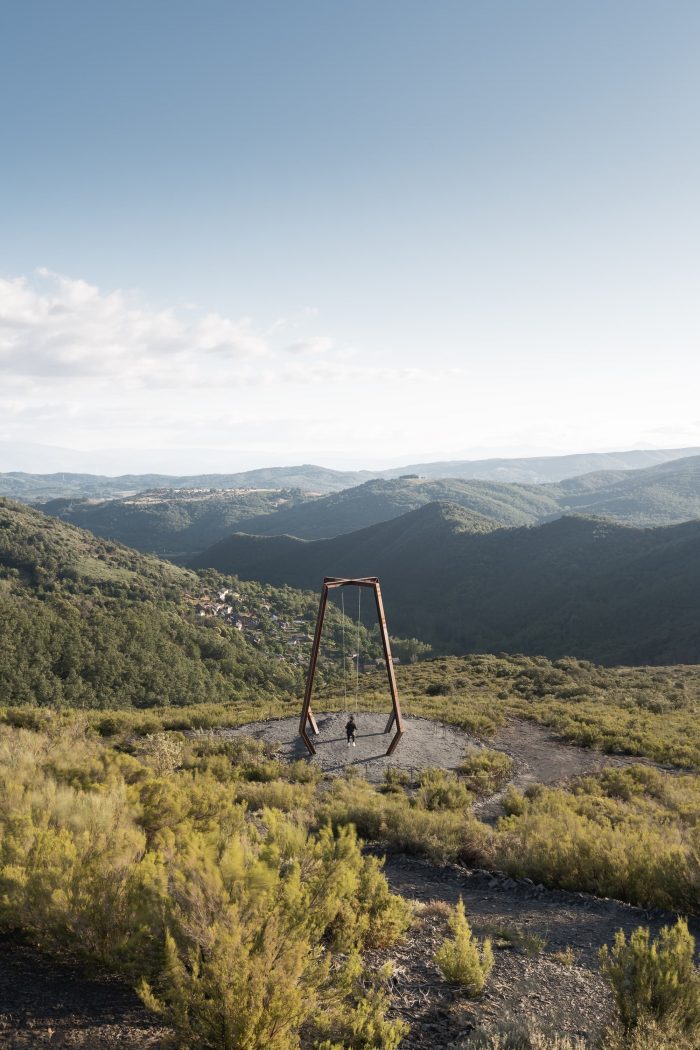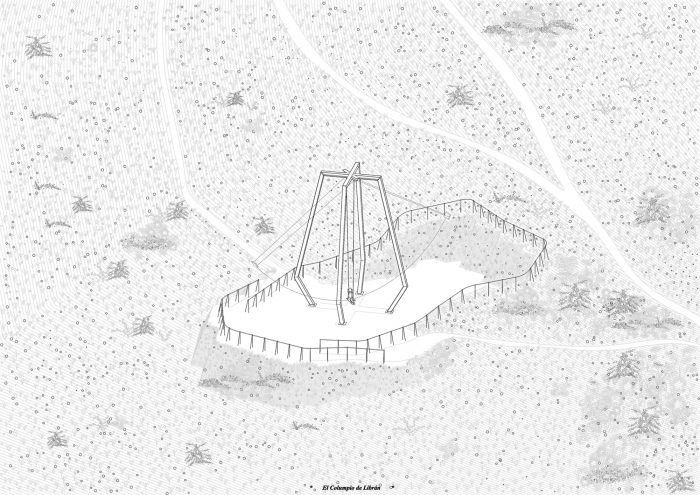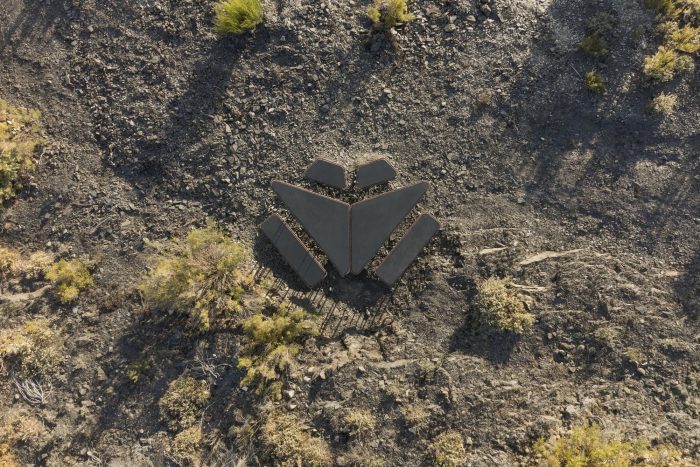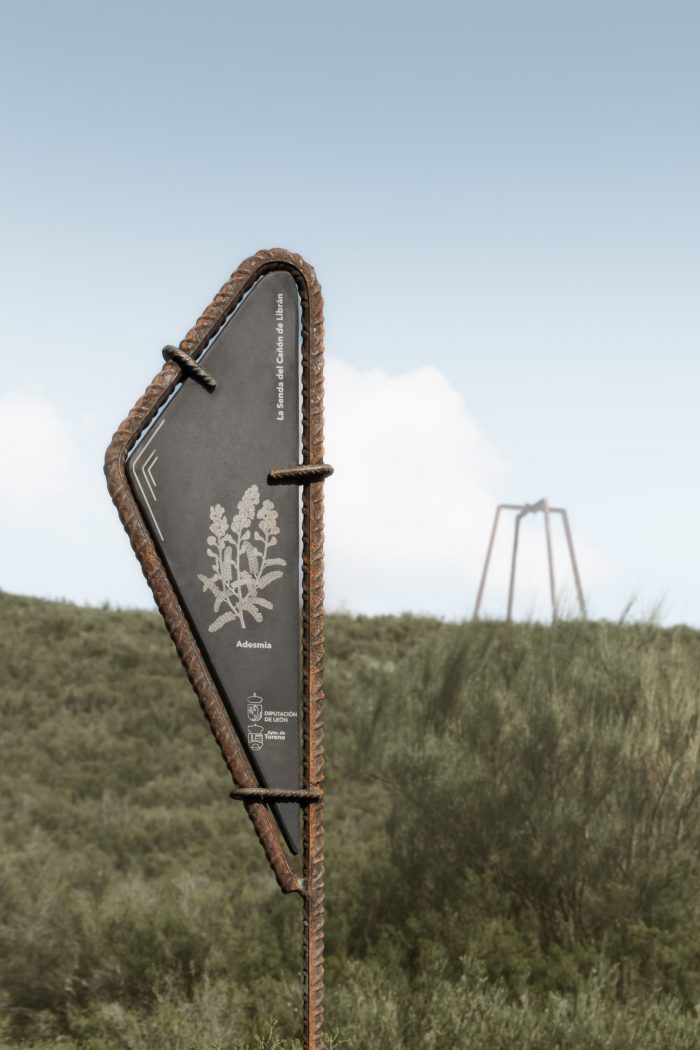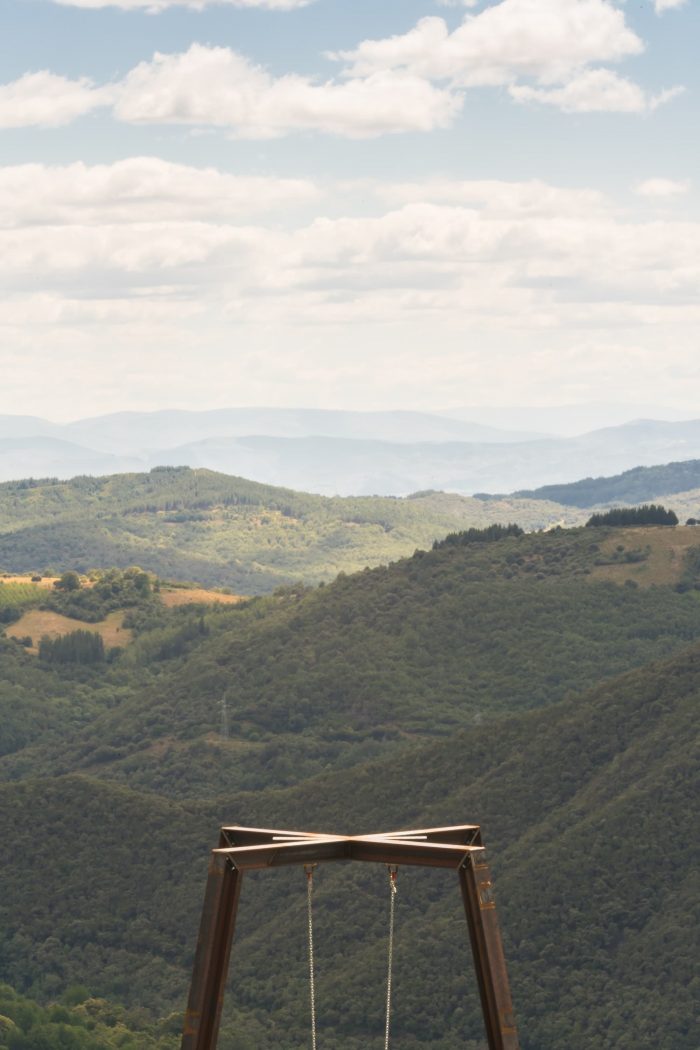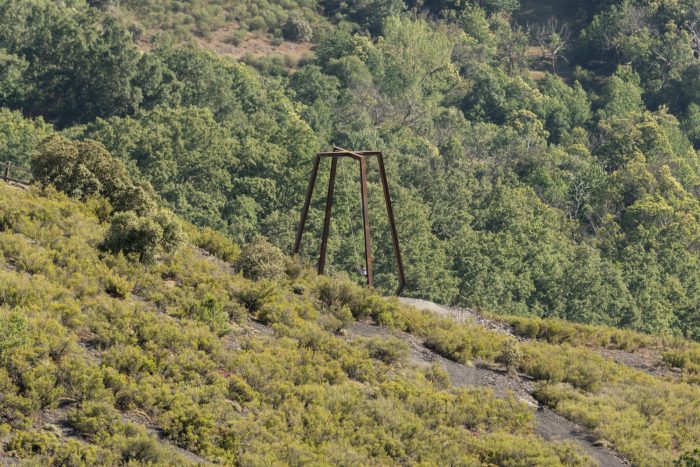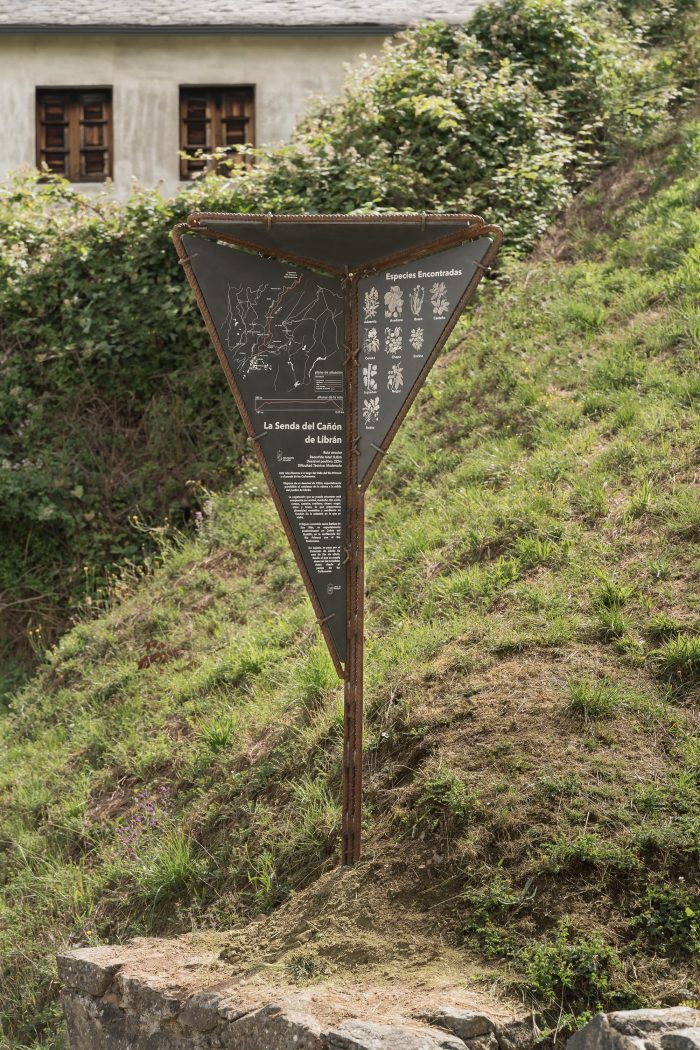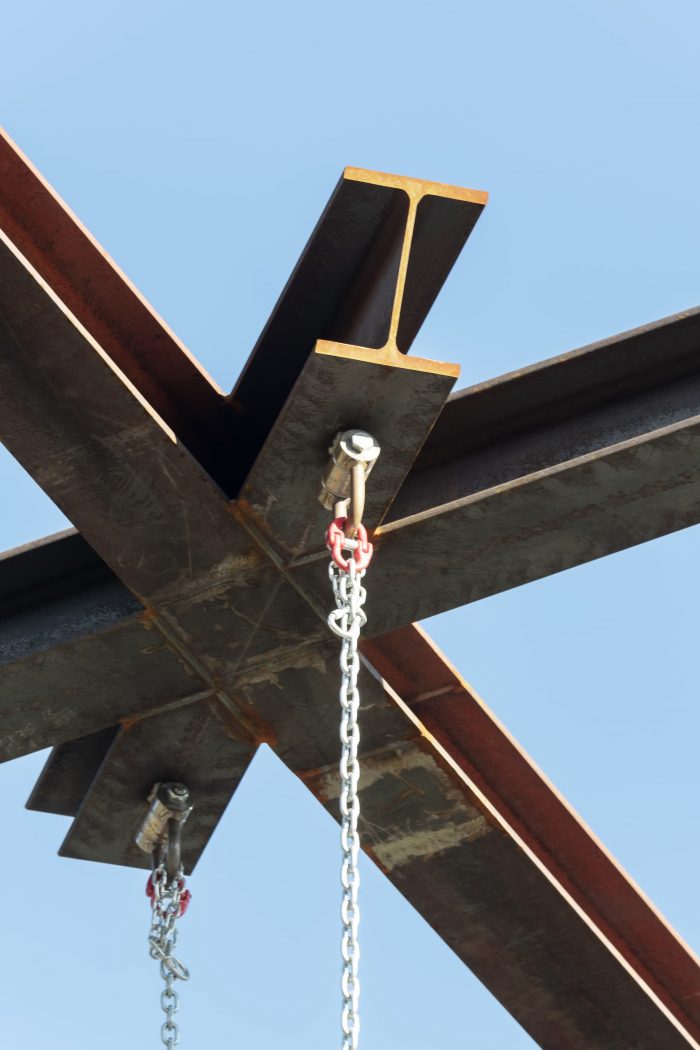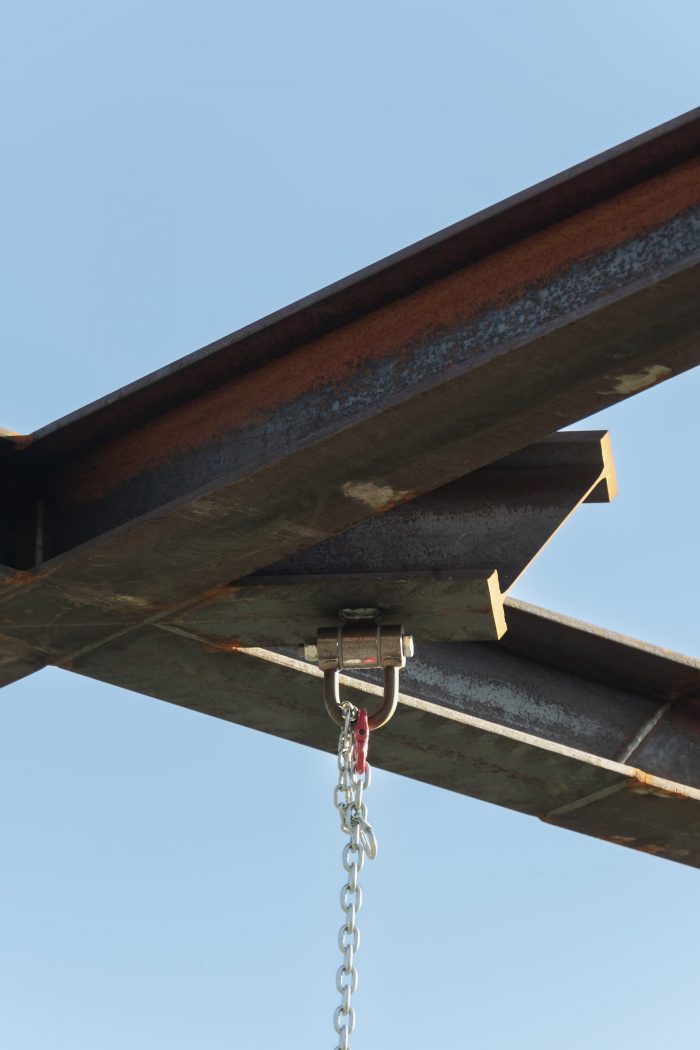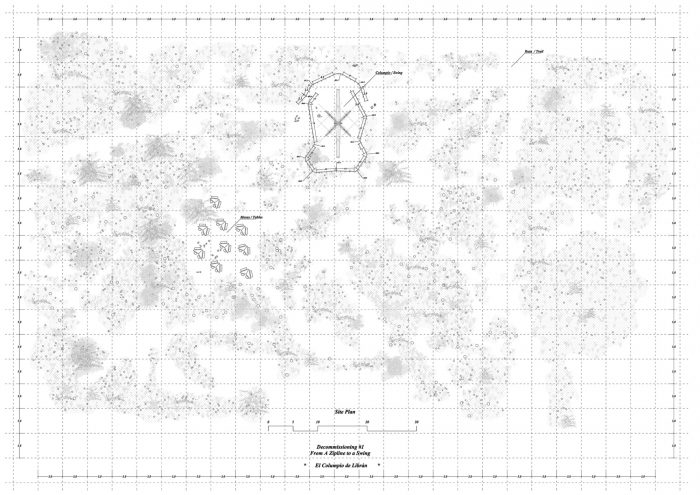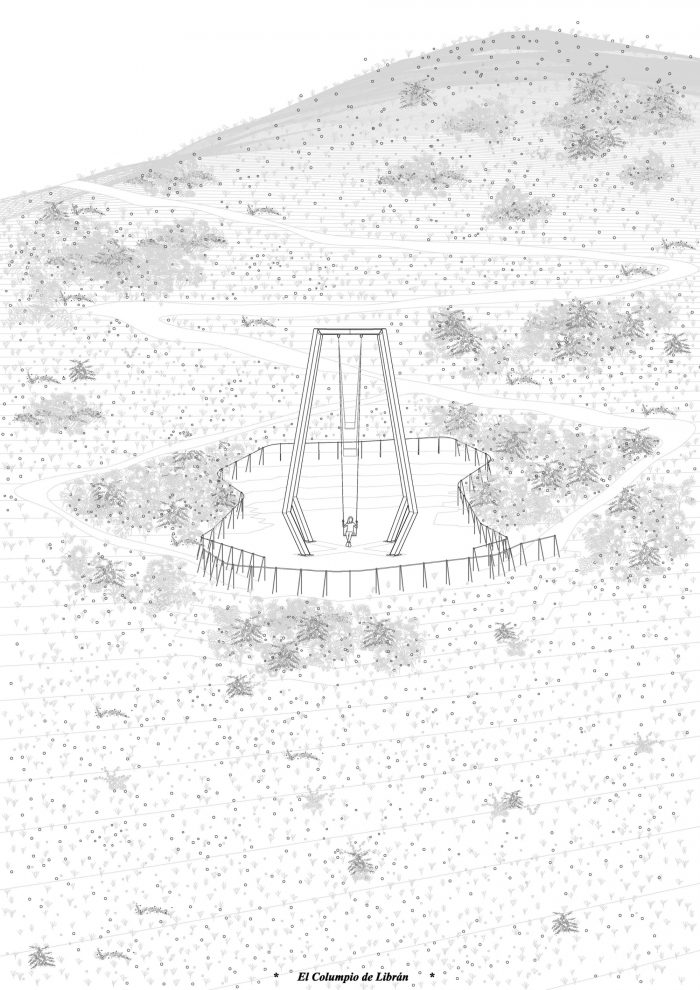一个废弃的溜索结构位于西班牙小村庄利布兰的一座山顶上。三个大型垂直结构,每个都由两根横梁组成,几年前竖立起来,在极少的活动之后,仍然留在那里,在风景之上,默默无闻。振兴该地区的愿望已经开始以各种方式出现,其中之一是委托建造一个大型公共秋千,既能俯瞰该镇,又能作为一个新的标志,与云霄飞车位于同一地点。新的东西的委托,需要旧的东西的退役;这种观察是项目的基础。
An abandoned zipline structure was located atop a hill in the small Spanish village of Libran. Three large vertical structures, each made of two beams, were erected some years ago and after minimal activity remained there, above the landscape in silence. A desire to revitalize the region has begun taking form in various ways, one of which was the commissioning of a large public swing to both overlook the town and serve as a new icon, to be located on the same grounds as the ziplines. The commissioning of something new necessitated the decommissioning of something old; this observation served as the basis for the project.
通过测量、拆卸、切割、重新配置和焊接的策略,每根梁都在同一地点找到了新的角色,将它们从未使用的材料转变为新的灯塔。施工过程从拆除现有结构开始。每一个塔楼都用吊臂卡车放下,以便以后重新使用。在车间里对型材进行切割、打磨和焊接,形成四条腿和一个横撑。装配是在现场进行的。在设计中,选择了一个类似于截断金字塔的形状,作为必要的切割数量的优化结果,获得了必要的高度,成为西班牙最高的秋千之一。它与地面保持最小的接触,并减少它所占据的空间,使Encina Carrasca、Adesmia和Brezo形成的现有生态得以蓬勃发展。
A strategy of measuring, dismantling, cutting, reconfiguring, and welding saw each beam find a new role in the same location, transforming them from unused material into a new beacon. The construction process begins by dismantling the existing structure. Each of the towers is lowered with a boom truck, to be reused later. The profiles are cut, sanded, and welded in the workshop, forming four legs and a cross brace. Assembly is carried out on-site. In the design, a shape similar to a truncated pyramid was chosen as a result of the optimization in the number of necessary cuts, acquiring the necessary height to become one of the highest swings in Spain. Keeping minimal contact with the ground and reducing the space it occupies, it allows for the flourishing of the existing ecology formed by Encina Carrasca, Adesmia, and Brezo.
摆在景观上,俯瞰依偎在山脉之间的小镇,秋千作为一种呼吁,让当地人和游客感到被新的主张所吸引,通过一条新的徒步旅行路线促进Primout河谷的发展。当详细观察时,可以看到Librán秋千呈现出前世的伤痕,不同的颜色深浅显示了对材料进行的再利用的操作,这使它具有美感和教育意义。退役1号 “是一个大规模的材料循环利用的实验。
Postured on the landscape and overlooking the town nestled between the mountains, the swing serves as a call for locals and visitors to feel attracted by the new claim, promoting the valley of the Primout River through a new hiking route. When observed in detail, it can be seen that the Librán swing is presented with scars from its previous life, the different shades of color show the operations carried out on the materials to reuse them, and that makes it aesthetic and educational. Decommissioning #1 is a large-scale experiment of material upcycling.
Librán的秋千是通过对从一个废弃的钢梁拉索结构中回收的材料进行细致的升级改造而创造出来的,这些材料经过解构、切割、打磨和焊接,创造出一个截断的金字塔,这是必要的切割次数的优化。它以前生活的伤痕通过不同的颜色呈现出来,显示了对材料进行的再利用的操作。这第一个实验是重新考虑我们的城市和城镇产生的集体废物的一个入口,并质疑我们如何开始创造性地再利用它们。
The Swing in Librán is created through a meticulous process of upcycling the materials reclaimed from an abandoned zip line structure made of steel beams, which are deconstructed, cut, sanded, and welded to create a truncated pyramid resulting from the optimization in the number of necessary cuts. The scars of its previous life are presented through the different shades of color, which show the operations carried out on the materials to reuse them. This first experiment serves as an entry into reconsidering the collective waste produced by our cities and towns and questions how we might begin to creatively reuse them.
此外,这个秋千并不孤单,因为它被设想为远足小径上的一个站点,作为当地一项新举措的一部分,以利用该镇最大的质量;它的自然。因此,伴随着它的是一系列的标志和点缀在路径上的家具,由该地区常见的工业和自然材料制成。它们也与地面保持最小的接触,并且像秋千一样,将随着时间的推移而风化。这些家具允许路人休息并观察他们周围的生态质量,而这些标志则提供了关于该地点、植被以及如何到达下一个点的信息。在这个意义上,集体场所的概念对非人类的理解和对人的理解一样多,并且随着时间的推移扩展了事件的概念,促使人们对居住在该地区的日常生命形式进行更仔细和更长时间的欣赏。
Additionally, the swing is not alone, in that it is conceived as a stop on a hiking trail as part of a new local initiative to leverage the town’s greatest quality; its nature. Thus, accompanying it are a series of signs and furniture dotting the path, made from industrial and natural materials commonly found in the region. They too maintain minimal contact with the ground and like the swing, will weather with time. The furniture allows passersby to rest and observe the qualities of the ecology around them, while the signs provide information about the site, the vegetation, and how to reach the next point. In this sense, the idea of collective places is understood as much for non-humans as it is for people, and extends the notion of events over time, prompting a closer and longer look of appreciation to the everyday forms of life that inhabit the area.
Architects: Pareid
Area : 249 m²
Year : 2022
Photographs :Iván Casal Nieto
Lead Architects : Déborah López, Hadin Charbel
Structure Engineers : Id0 Ingeniería
Contractors : BruCons Bierzo S.L.
Videography : Víctor F. Crespo
Video Editing : Pareid
Client : Ayuntamiento de Toreno
City : Librán
Country : Spain


